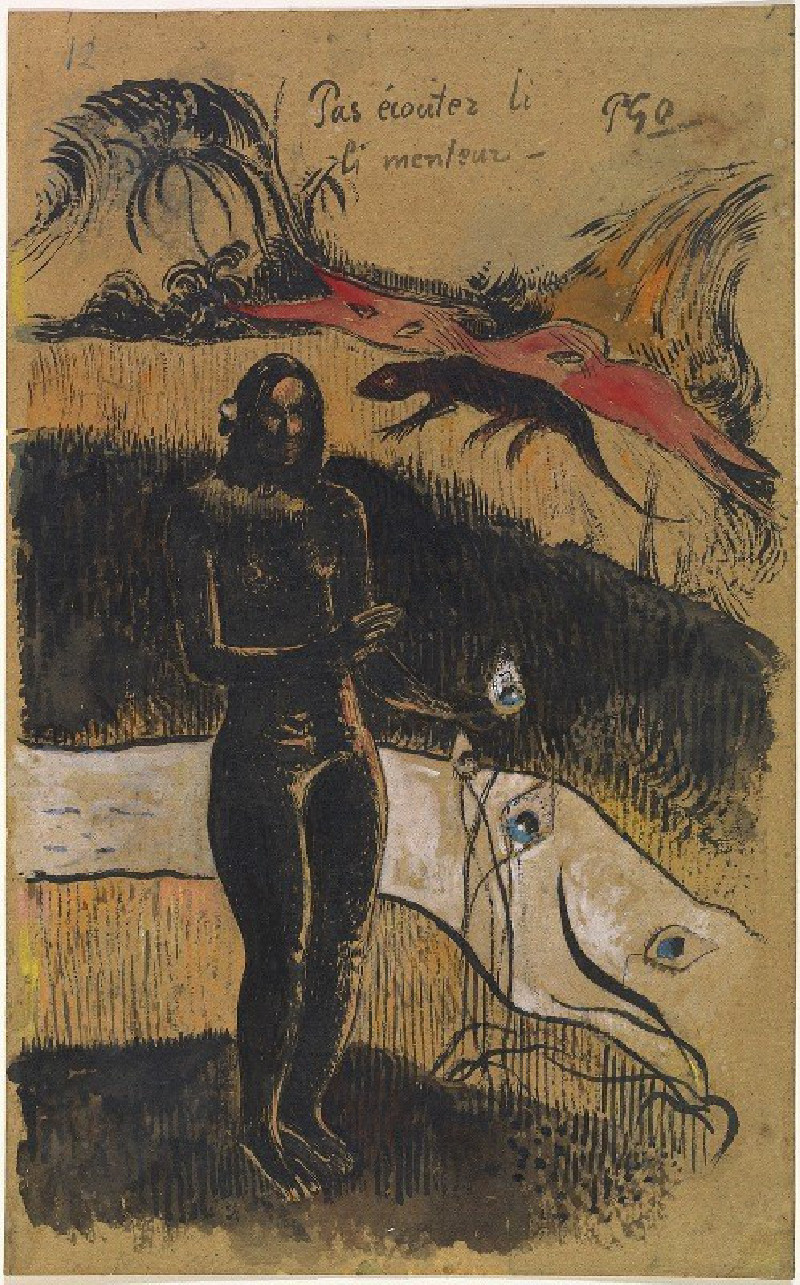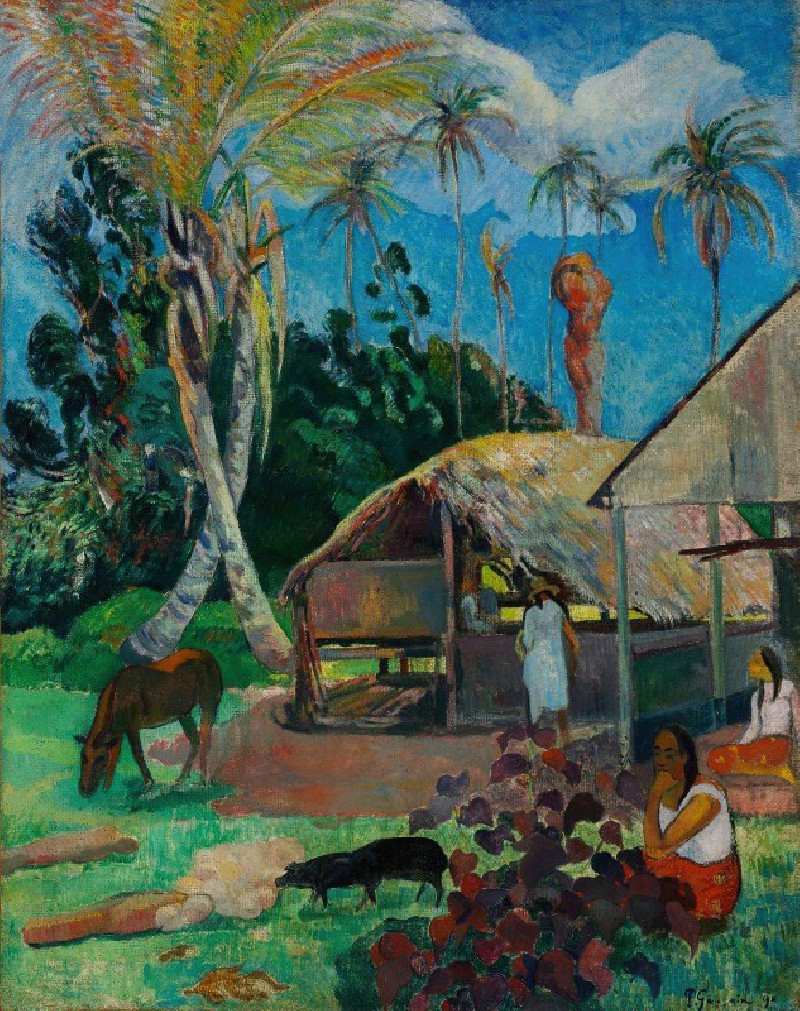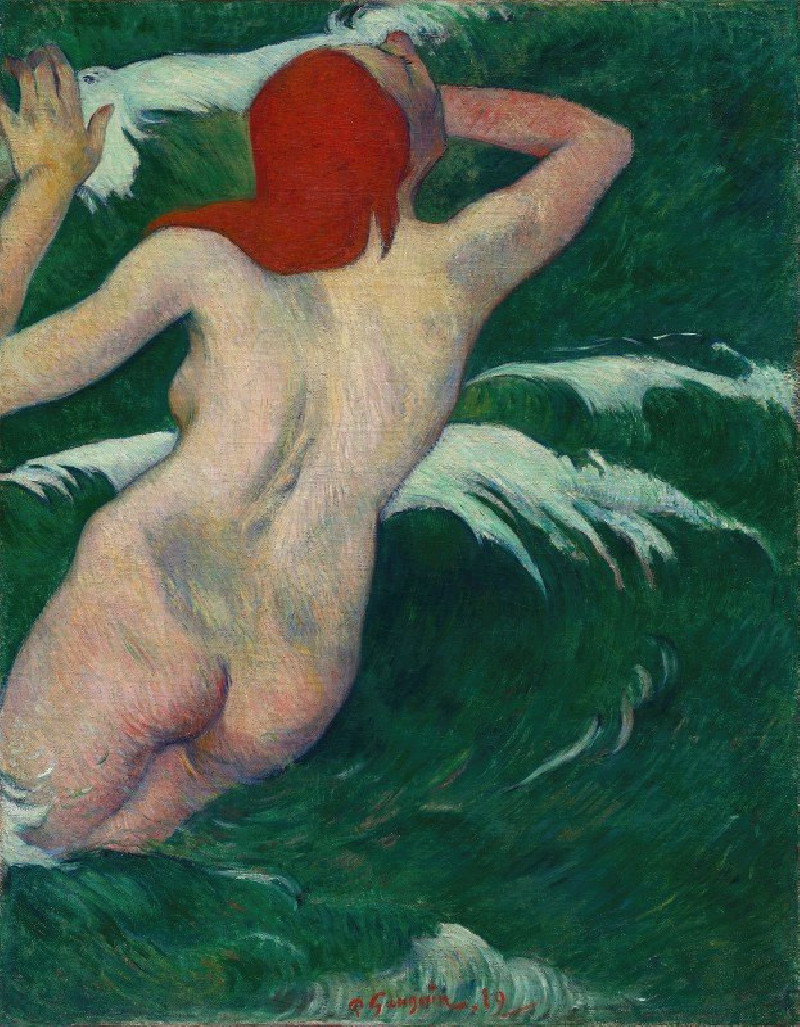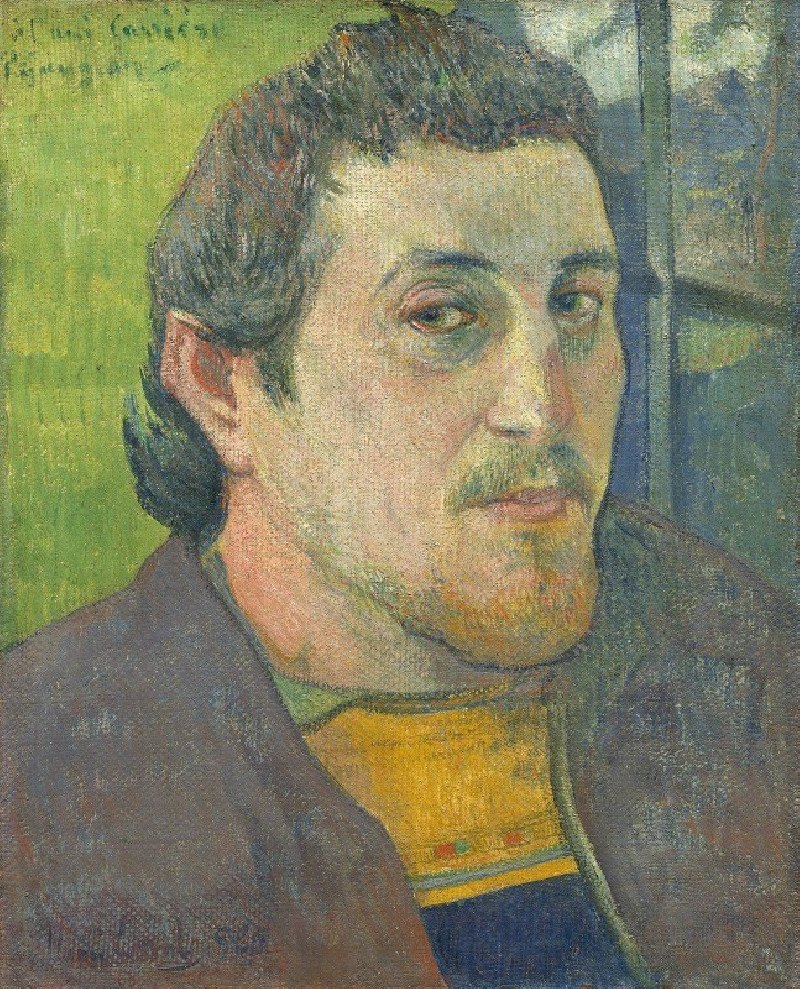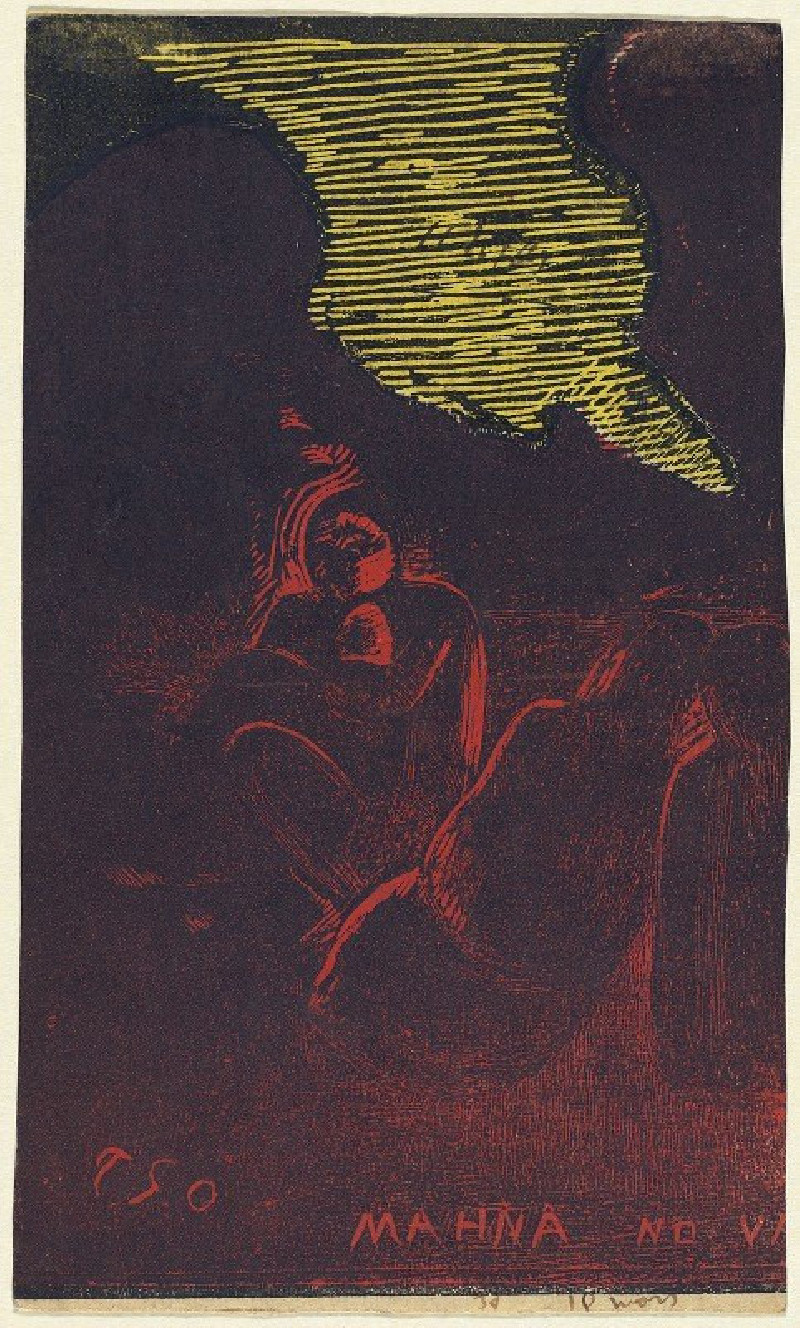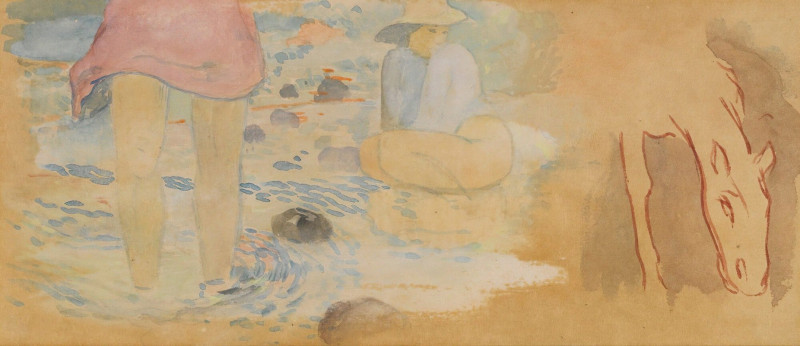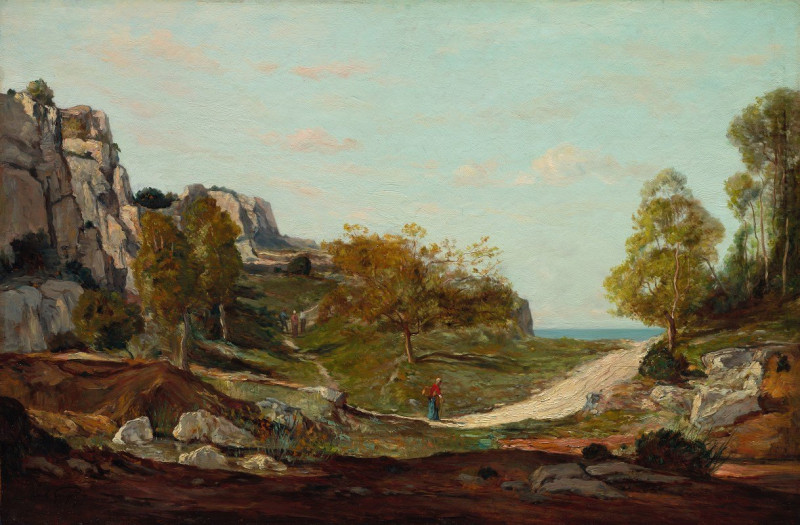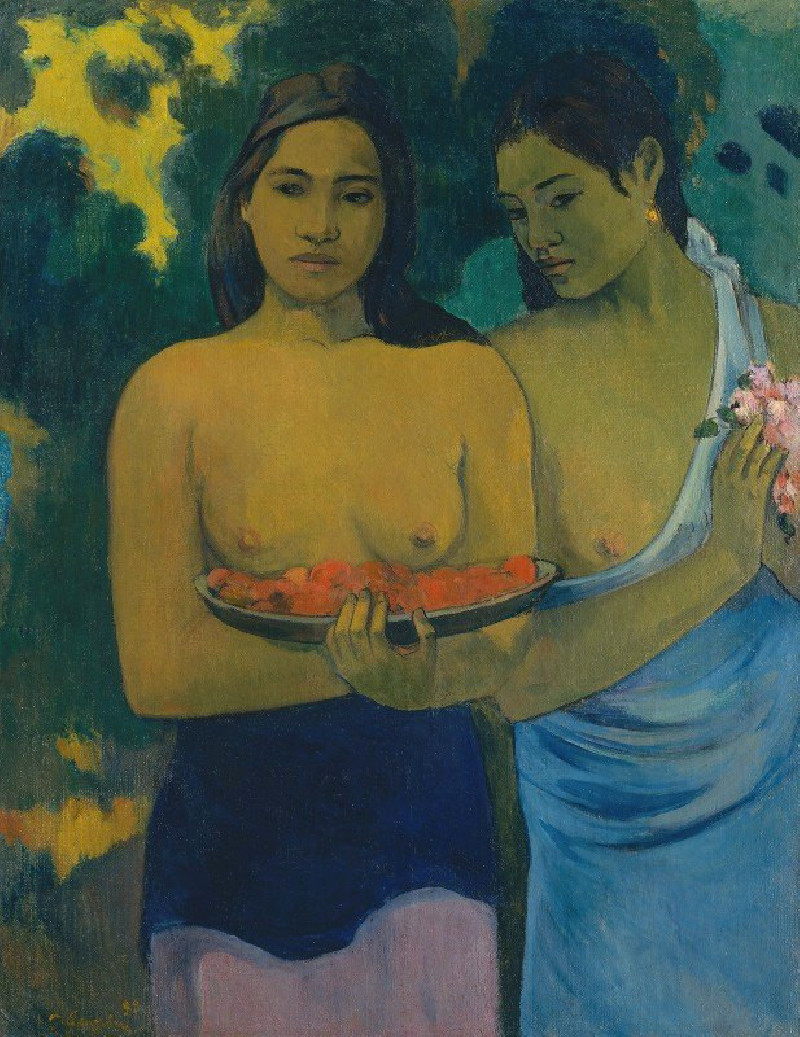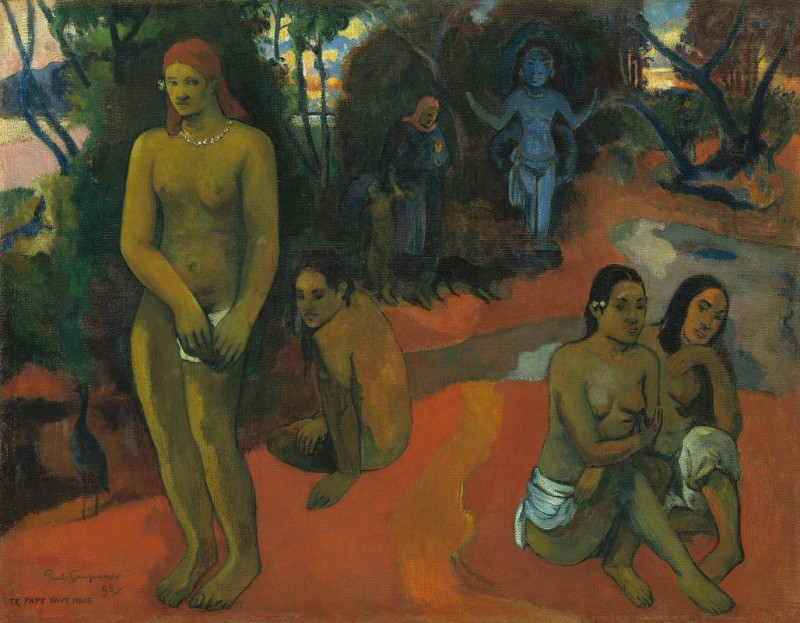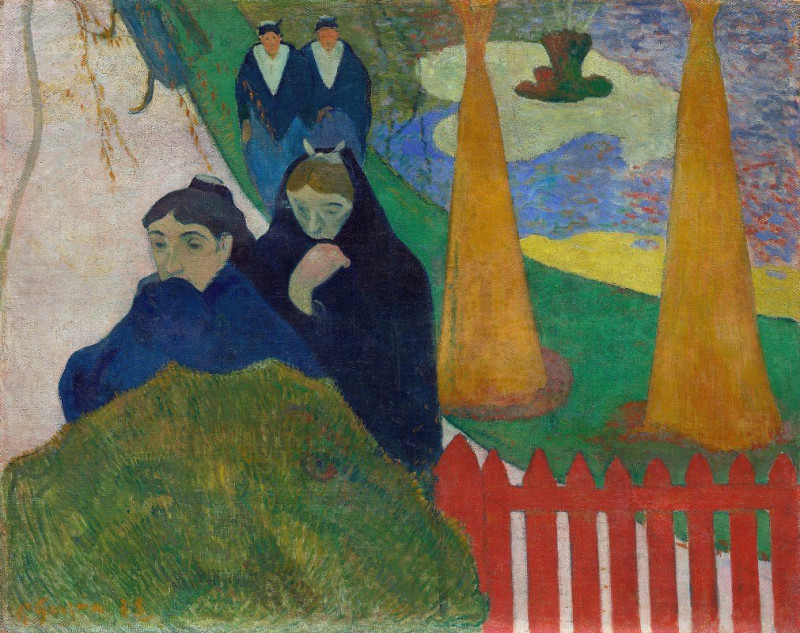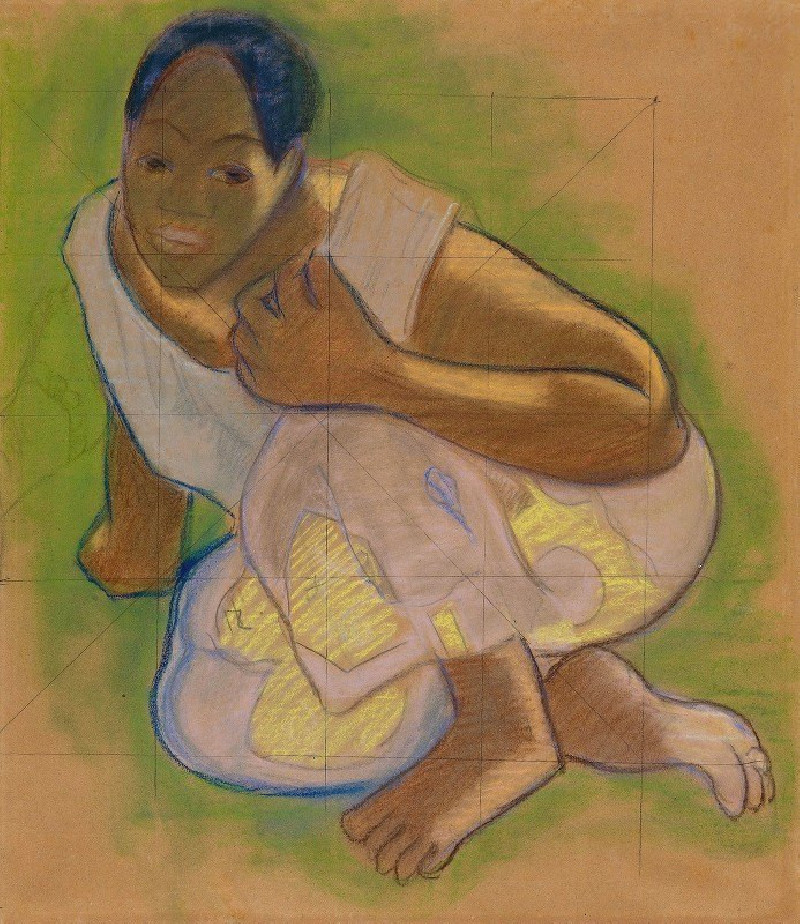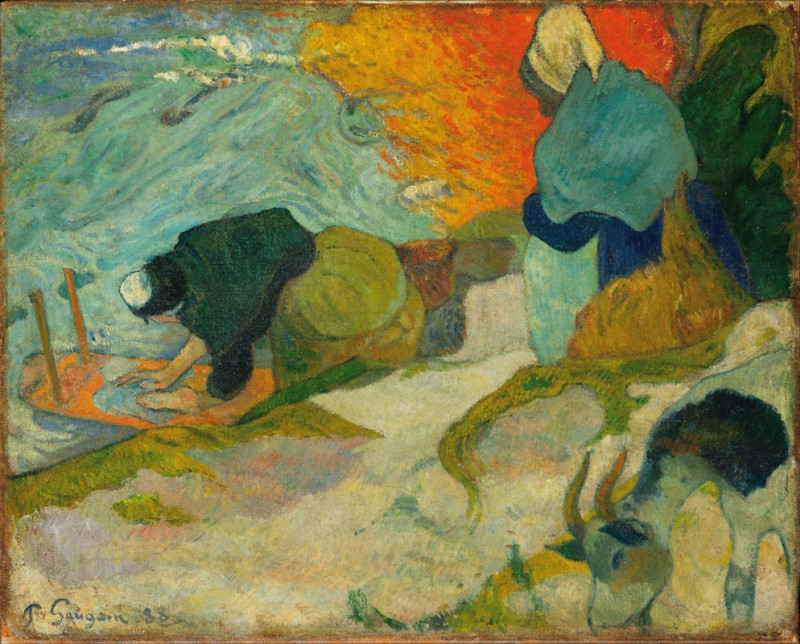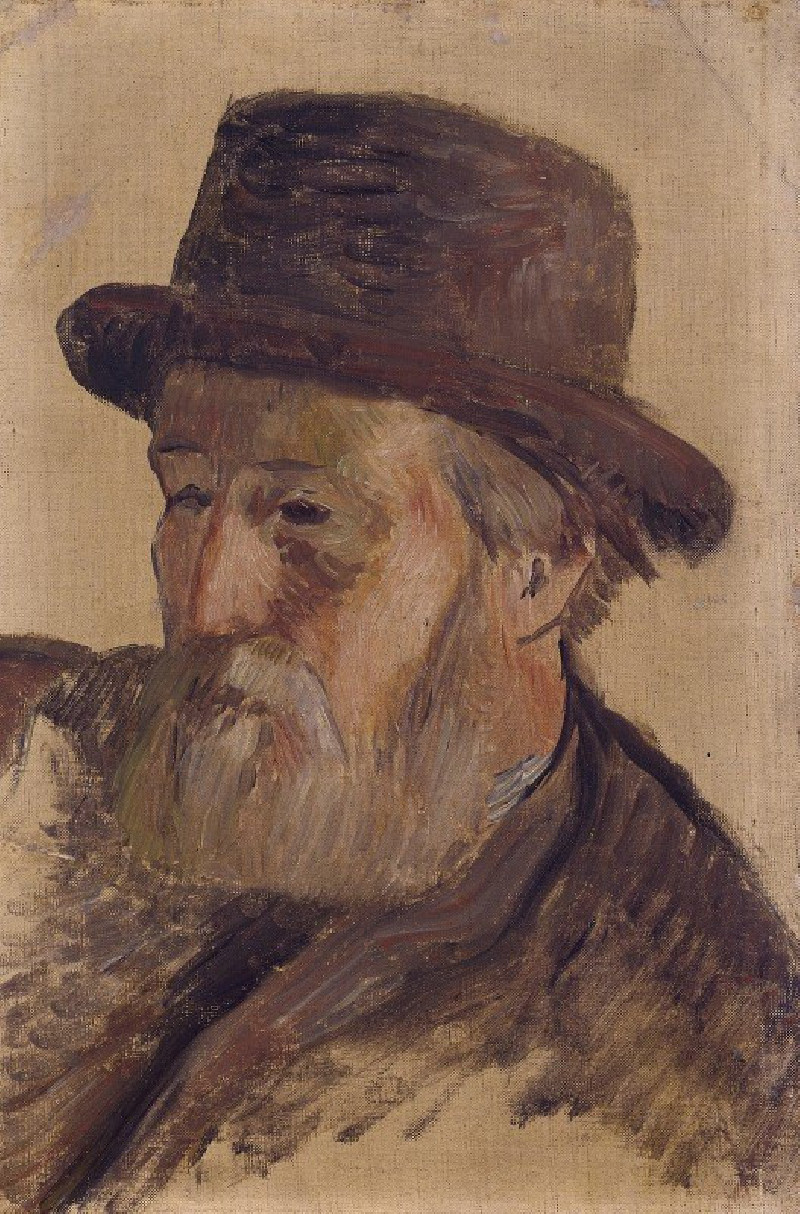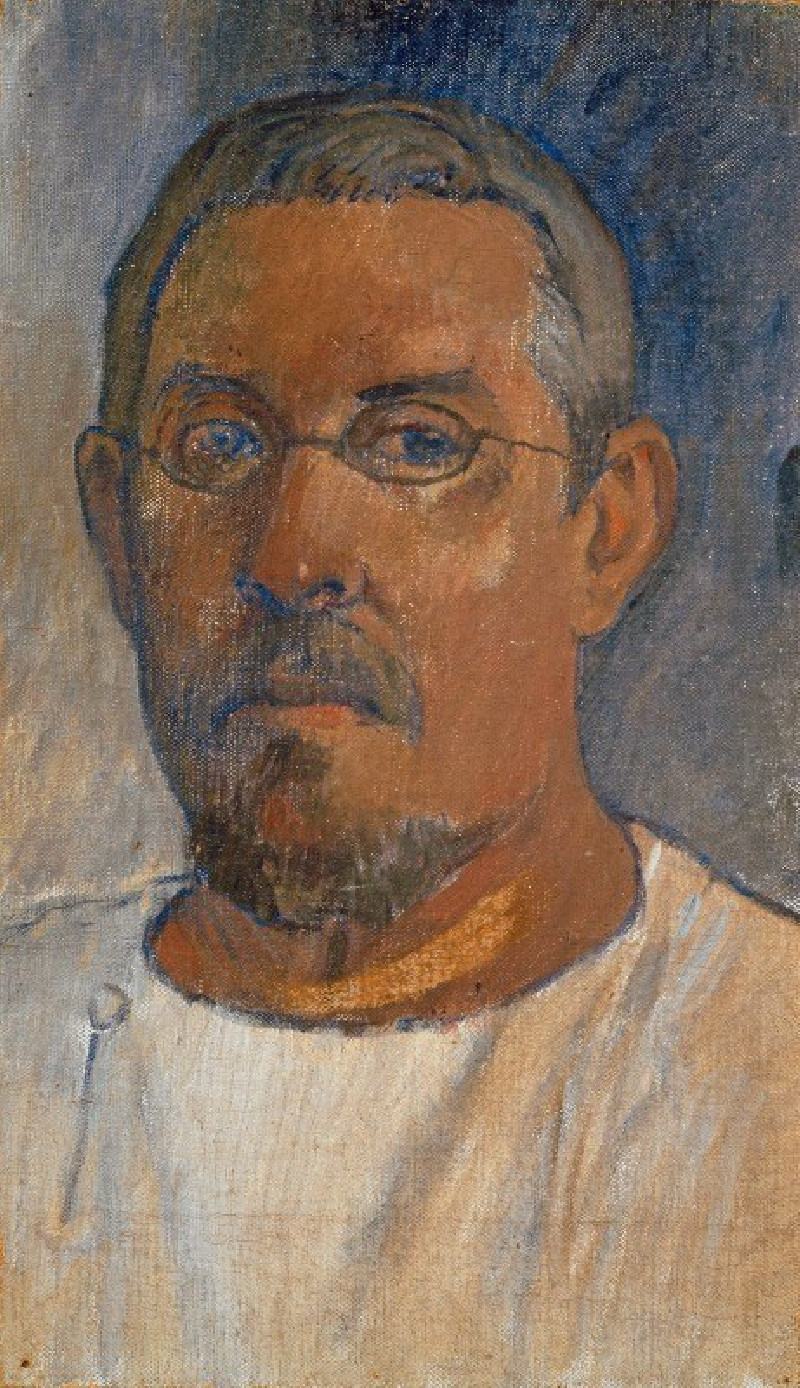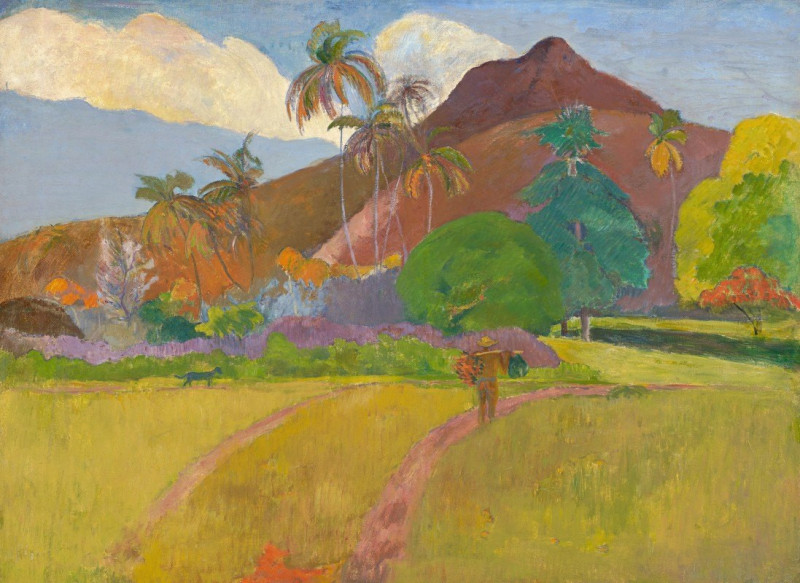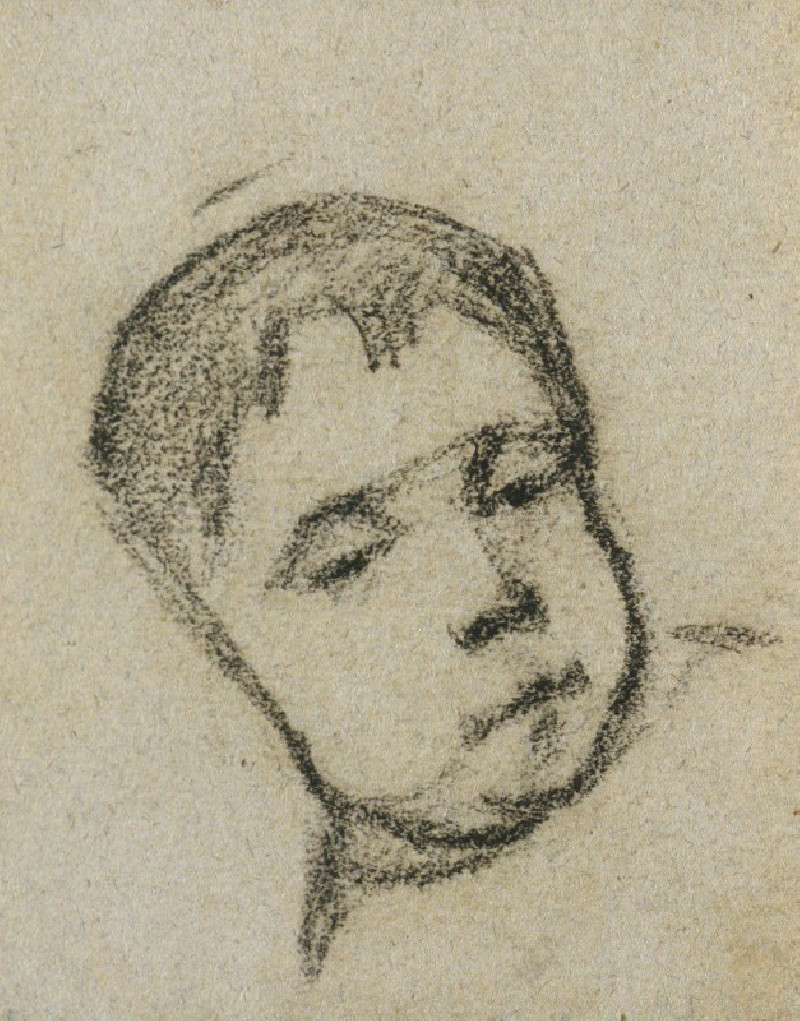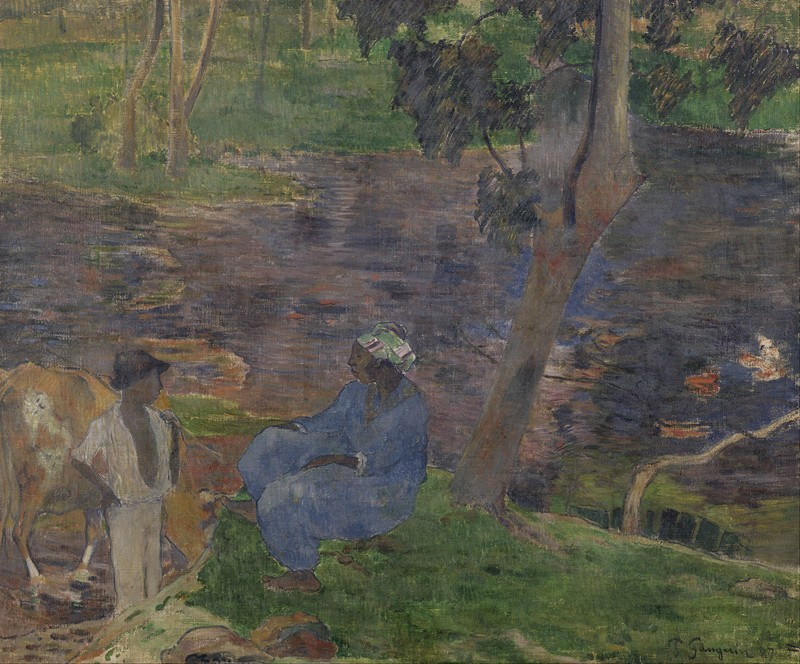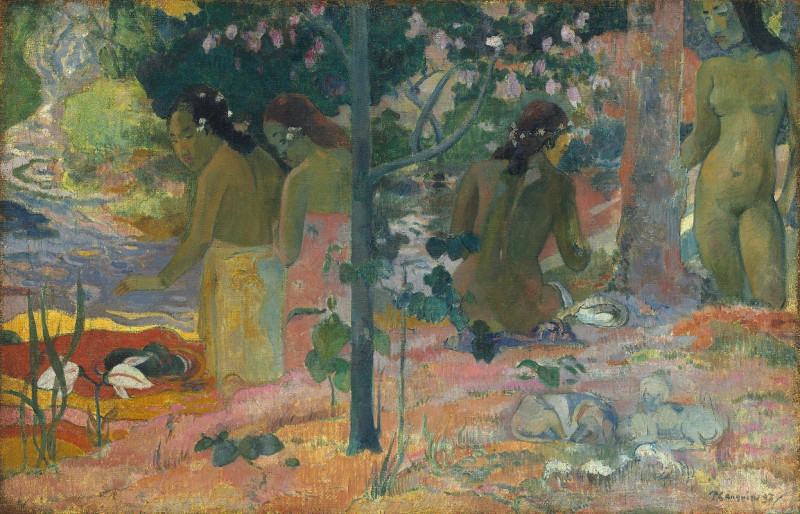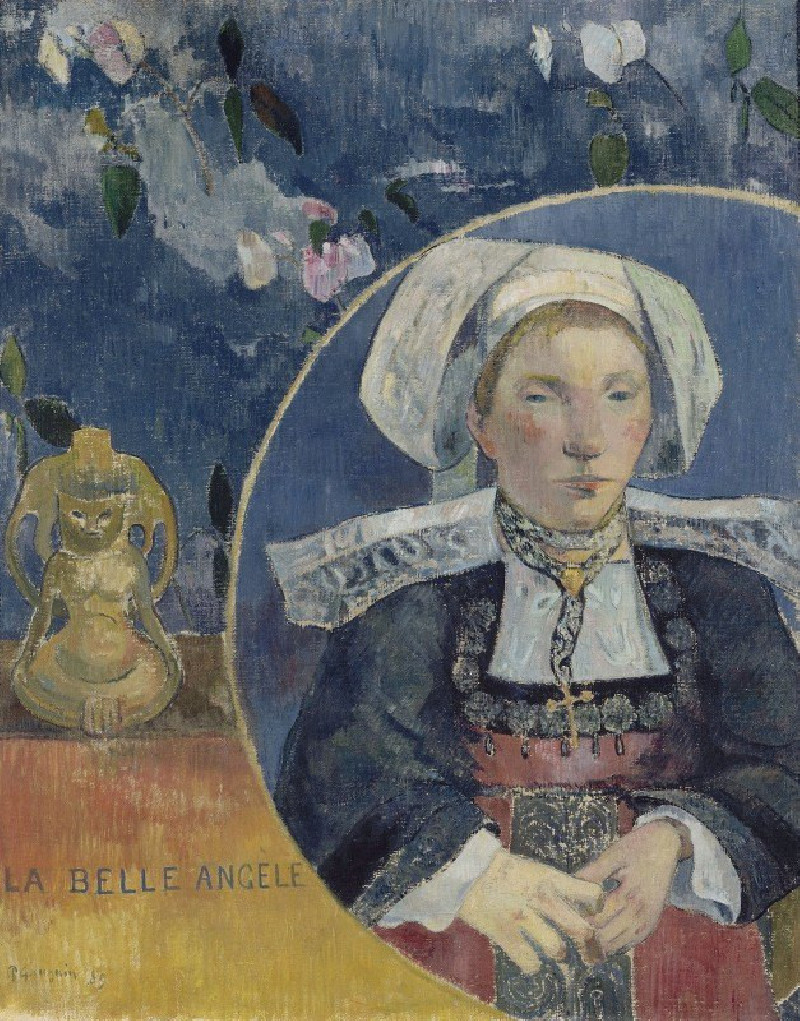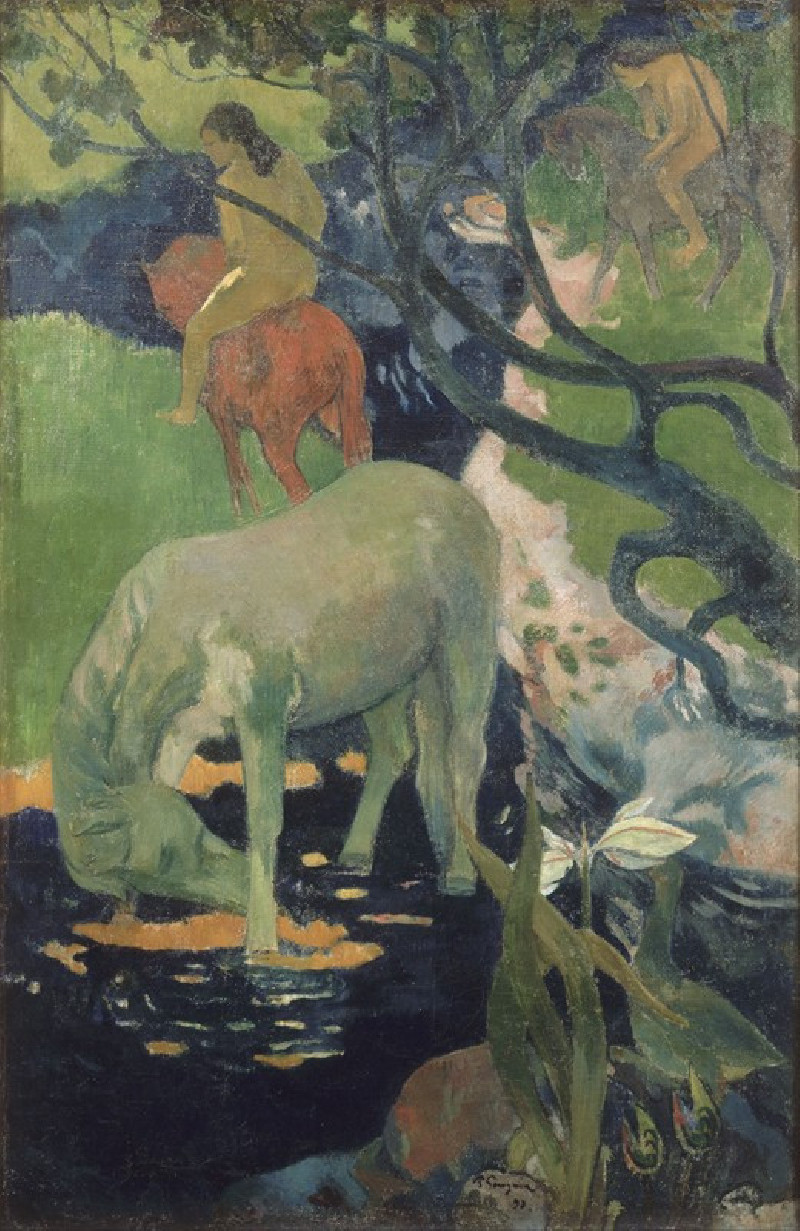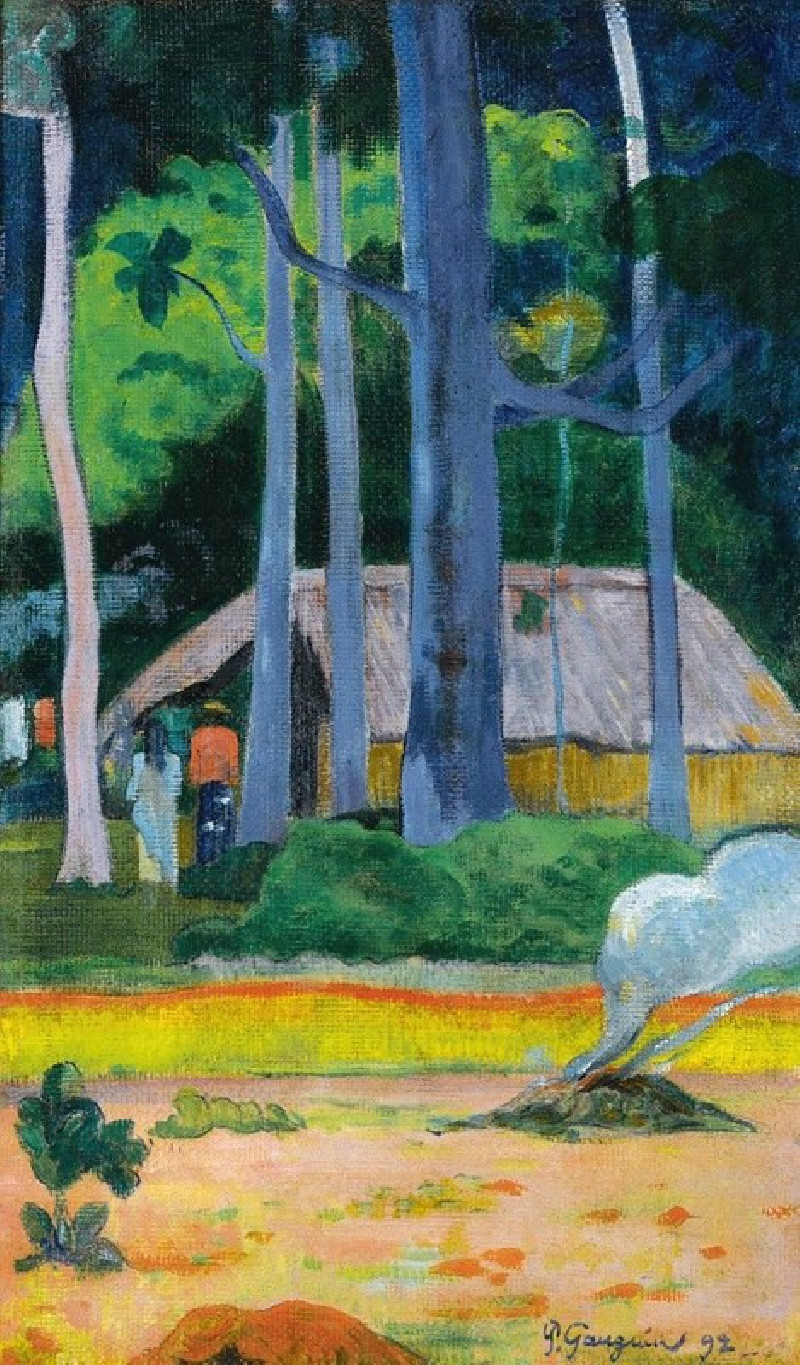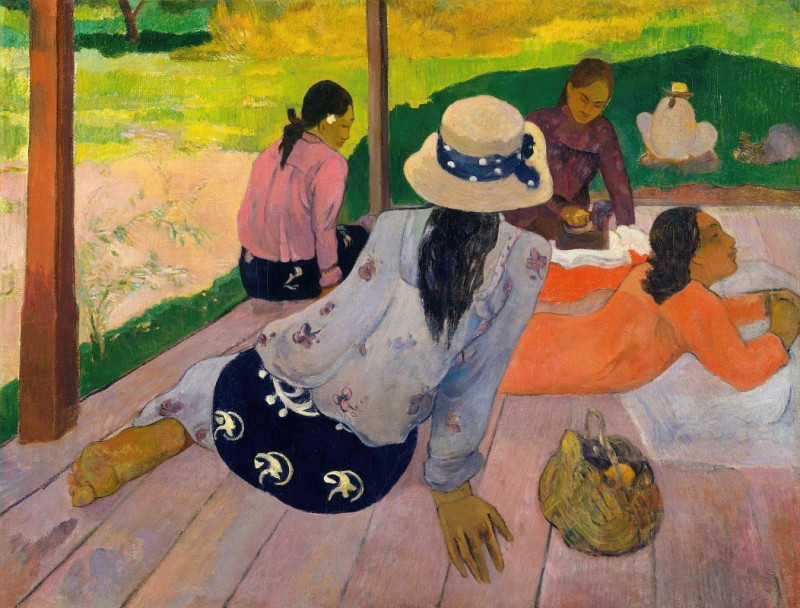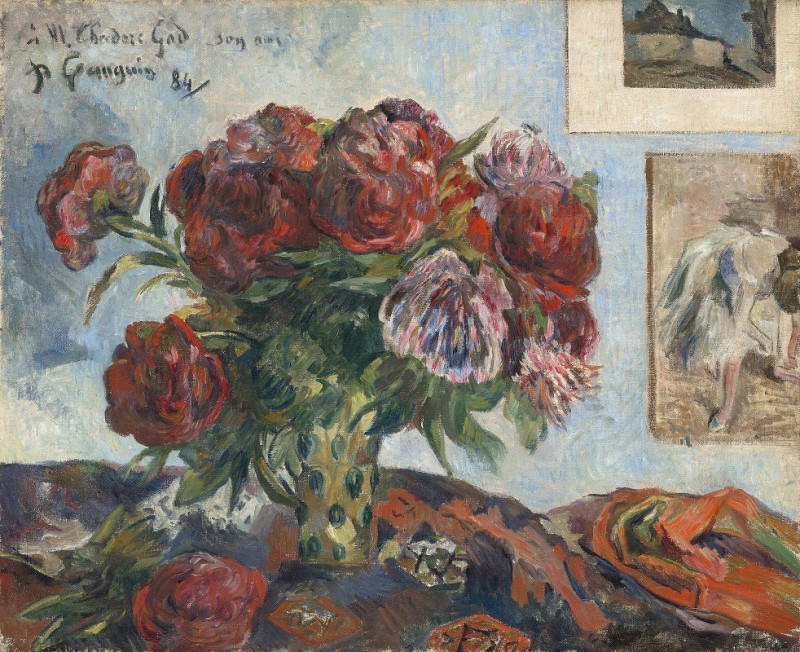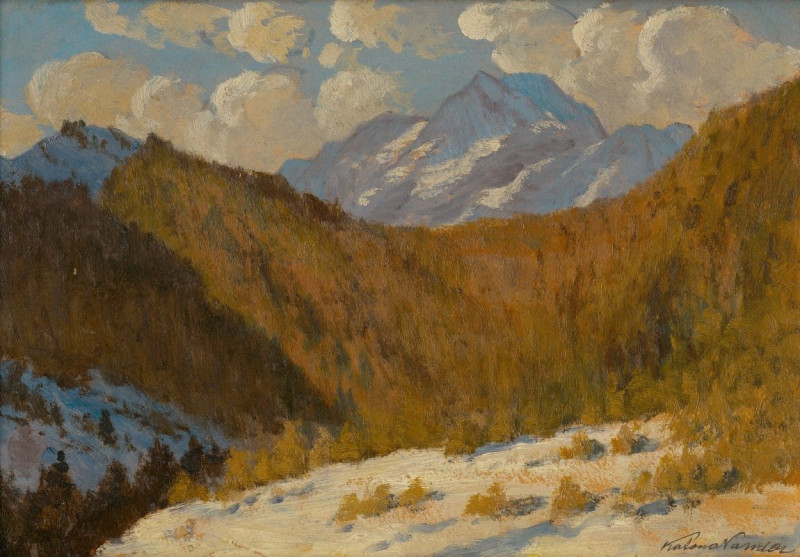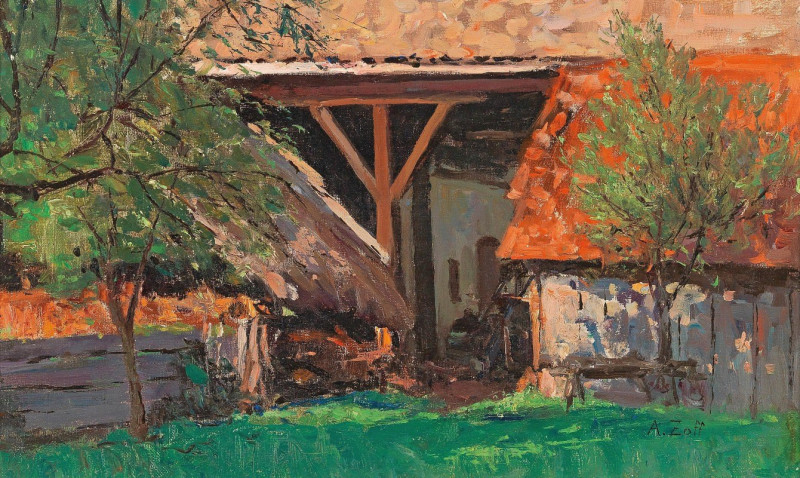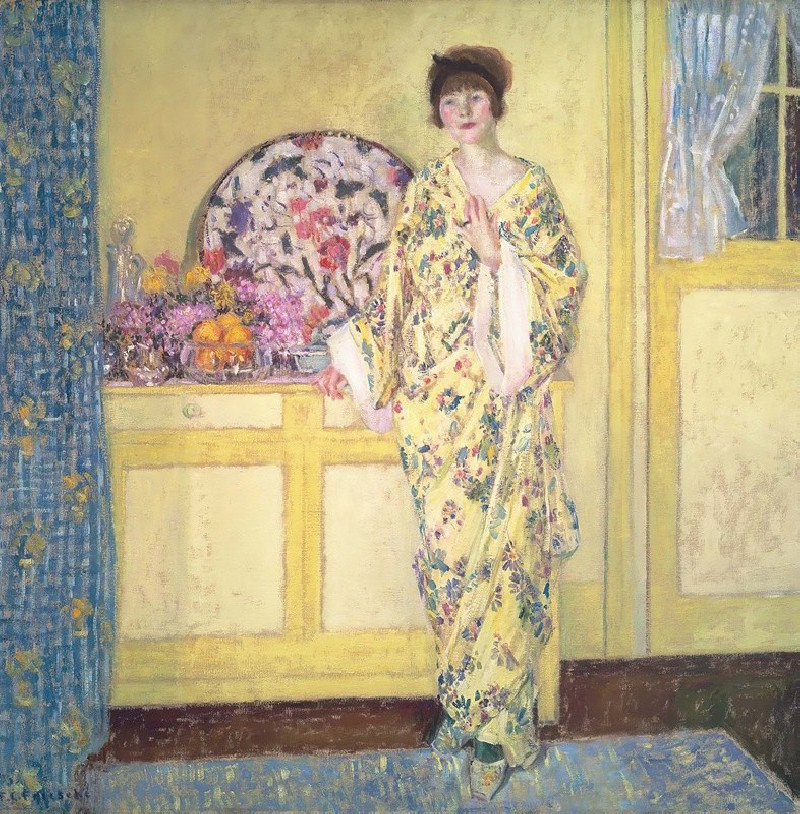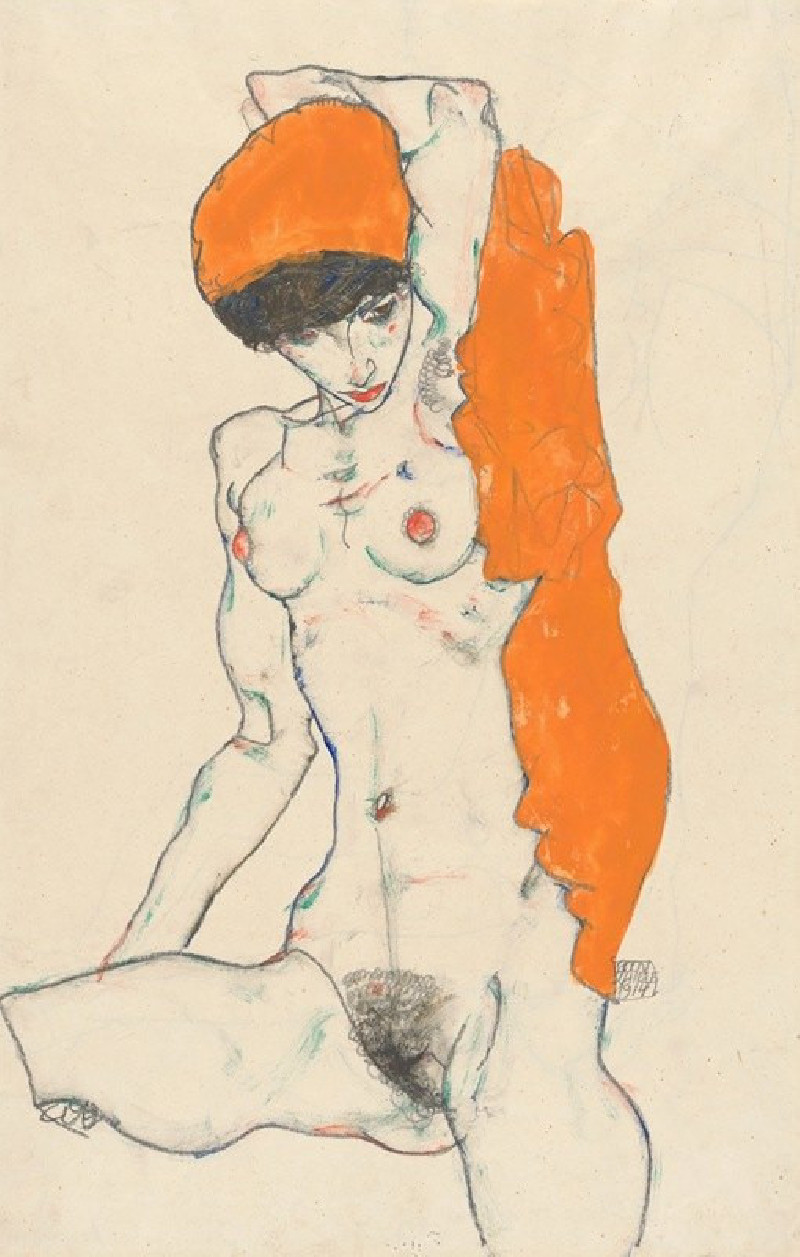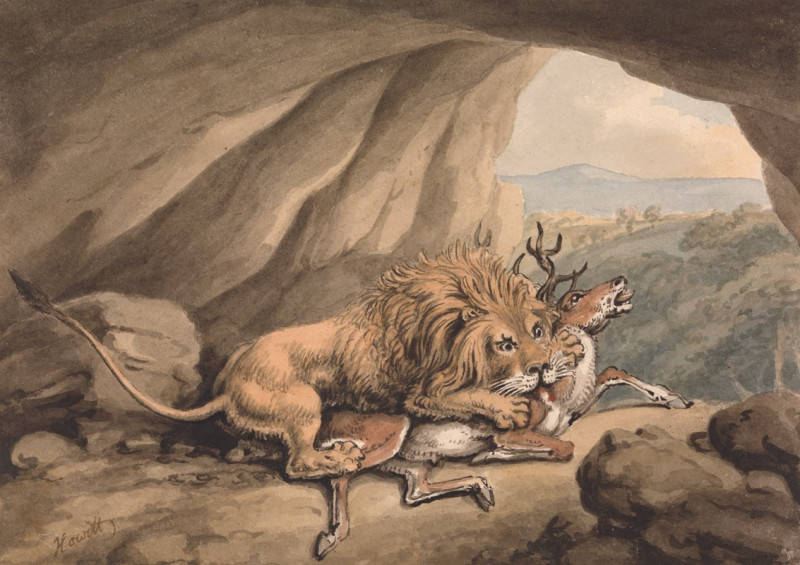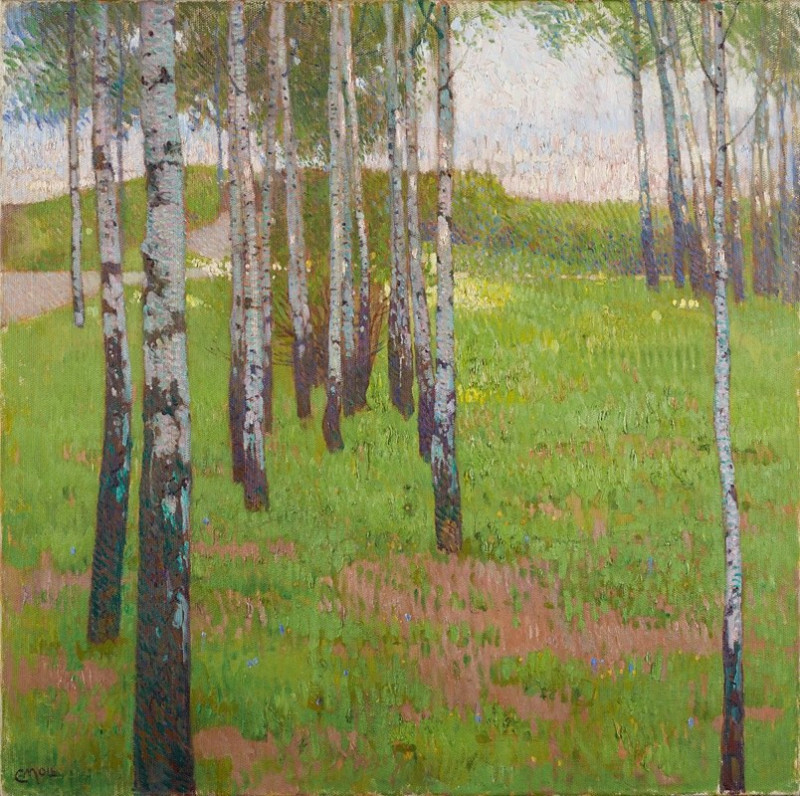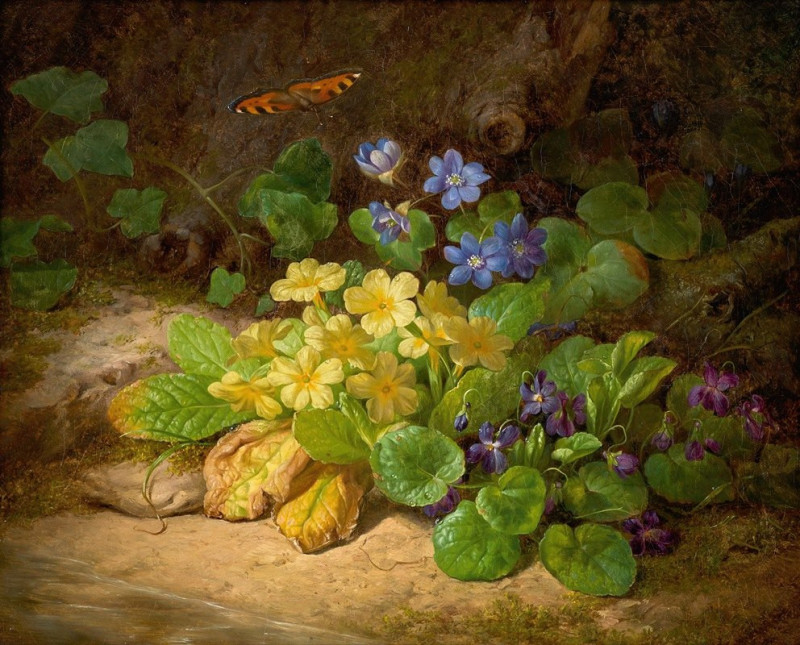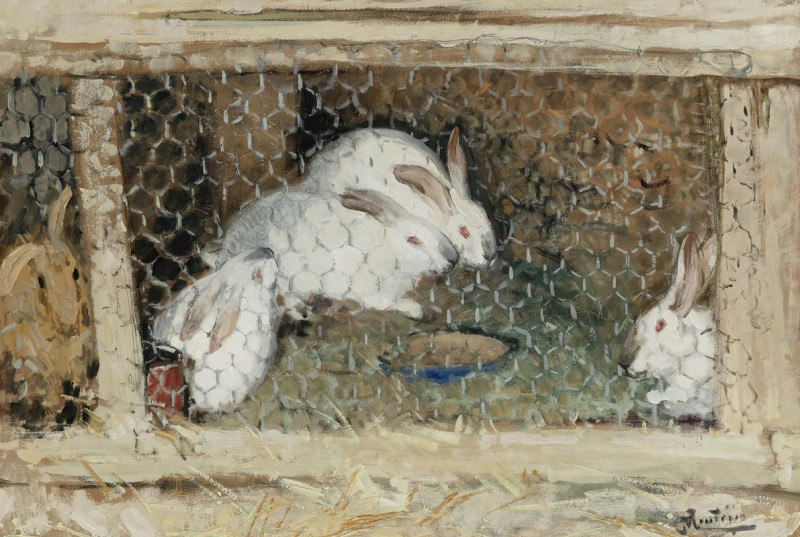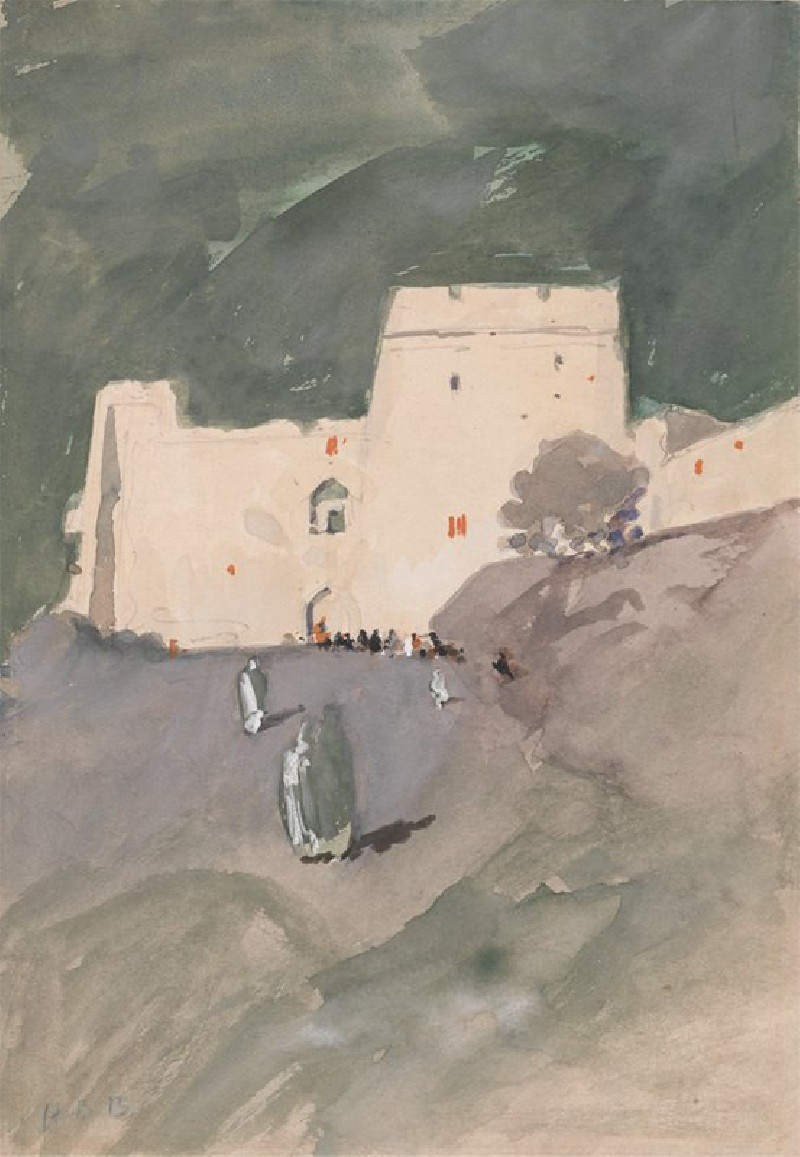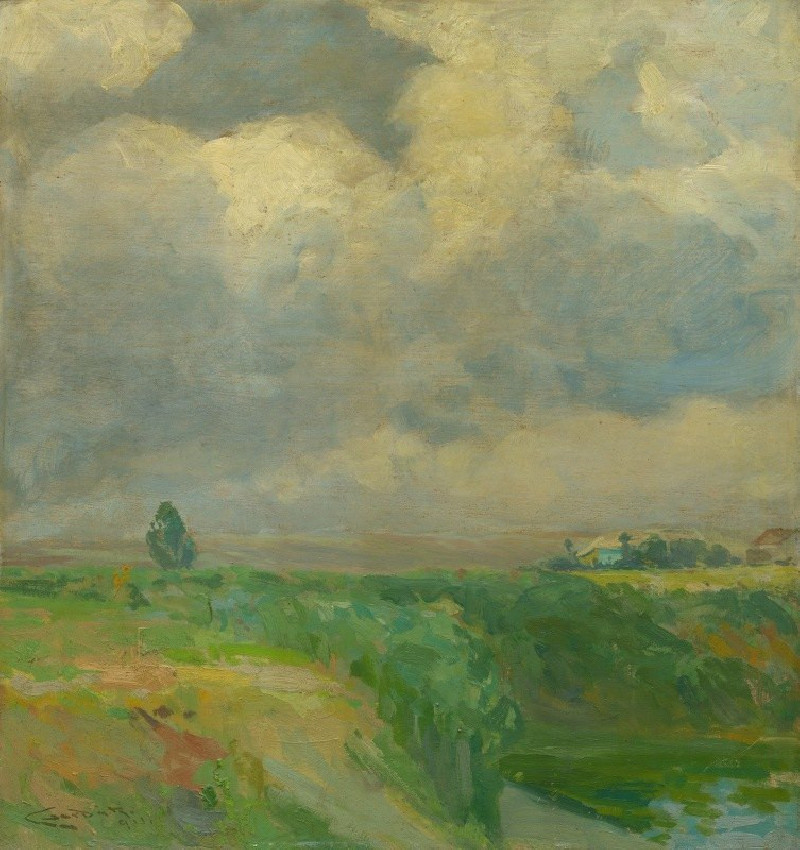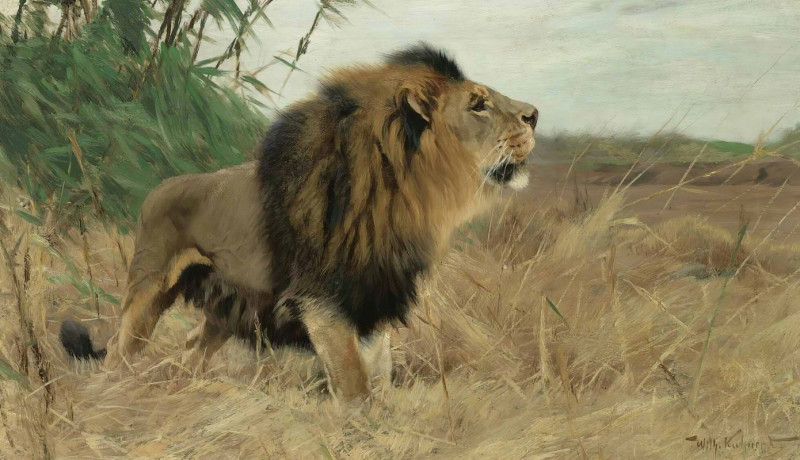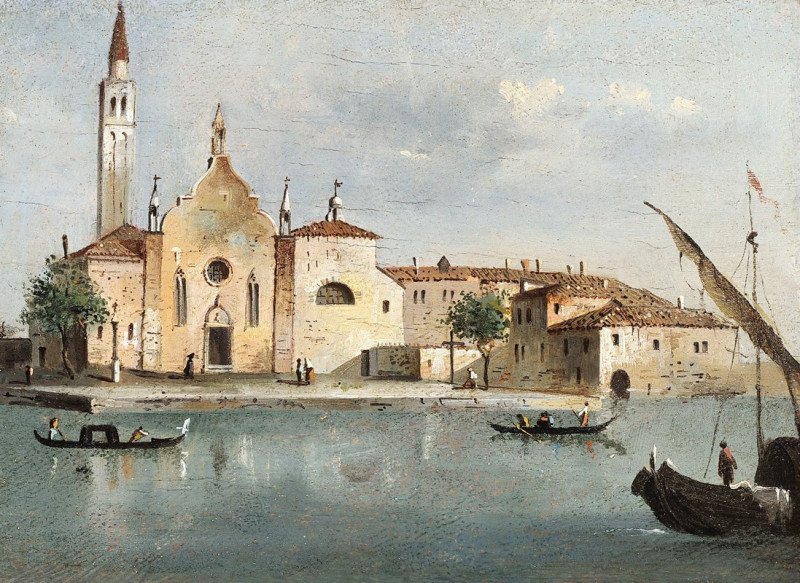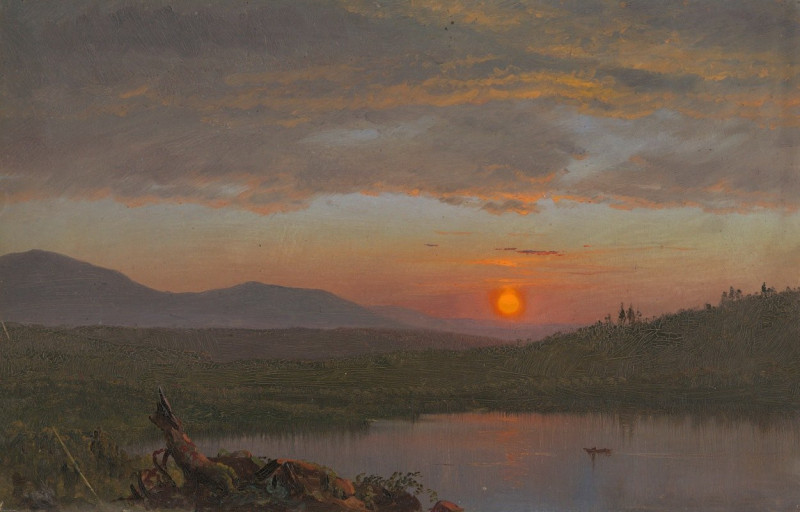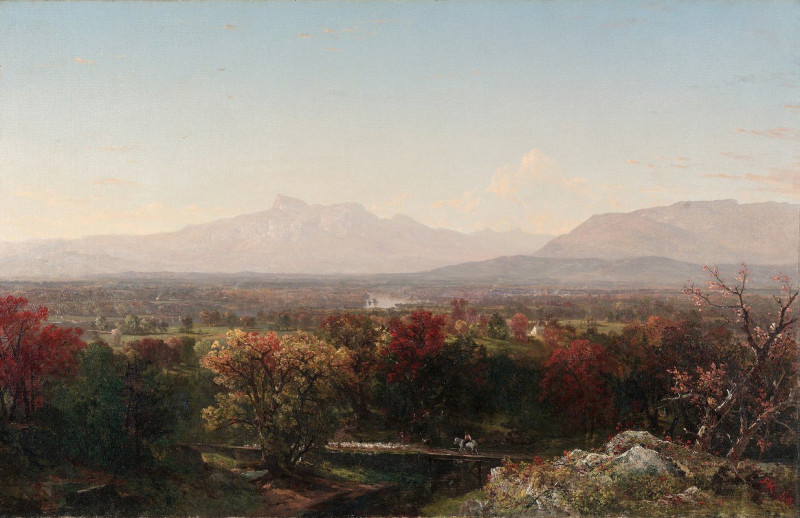Nave Nave Fenua (probably 1894)
Technique: Giclée quality print
Recommended by our customers
More about this artwork
"Nave Nave Fenua," translated as "Delightful Land," is a compelling artwork by the French Post-Impressionist artist Paul Gauguin, probably created in 1894 during his first stay in Tahiti. This piece exemplifies Gauguin's fascination with the exotic allure of the Tahitian landscape and its inhabitants, which profoundly influenced his artistic style.The painting features a richly textured surface and a vivid depiction of a Tahitian woman standing prominently at the center. Her solemn pose and expression exude a sense of calm and mystery, characteristic of Gauguin’s representations of Tahitian women. The background is an organic and harmonious blend of abstract forms and tropical elements, such as palm trees and stylized waves, imbuing the scene with a dreamlike quality.Dominating the upper right corner in fiery shades of red and orange is a bird-like figure that adds a mythological or spiritual dimension to the composition. Enhancing the enigmatic quality of the painting, the script "Pas écouter li ment" ("Do not listen to him; he lies") penned by Gauguin floats mystically above the scene, suggesting a narrative or a warning interwoven with the visual components."Nave Nave Fenua" is not just a glimpse into Gauguin’s style but also an invitation to delve into the cultural and spiritual life of Tahiti as seen through his eyes.
Delivery
Returns
Eugène Henri Paul Gauguin was a French Post-Impressionist artist. Unappreciated until after his death, Gauguin is now recognized for his experimental use of color and Synthetist style that were distinct from Impressionism. Toward the end of his life, he spent ten years in French Polynesia. The paintings from this time depict people or landscapes from that region.

